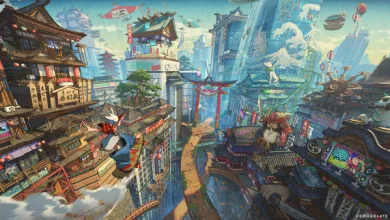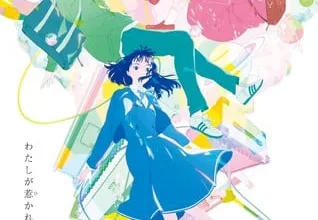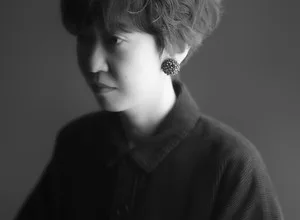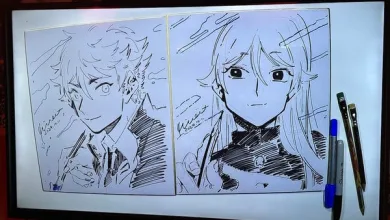Performing in the 2.5 Dimension: Producer Shimpei Yamashita on Oshi no Ko Season 2
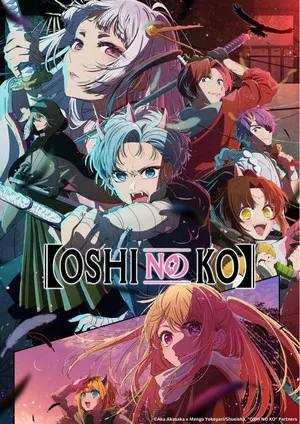
Oshi no Ko, based on the manga by Aka Akasaka and Mengo Yokoyari, may not have surprised readers of the series by being a hit. The story is by turns intense and humorous, balancing detailed examinations of what it means to project a perky, lighthearted image to the world while managing all the pieces of your life that aren’t for public consumption – like solving your own and your mother’s murders, for example. After an excellent first season, producer Shimpei Yamashita had to follow up with an equally stellar second. We had the chance to ask him some questions about what that process looked like and how the series’ ongoing themes made the transition from page to screen.
The first season of Oshi no Ko was incredibly popular. How did you handle the pressure of working on season two?
Shimpei YAMASHITA: Thank you! It’s thanks to all the fans that we were able to produce Season 2!
While I did feel the heat, I was really happy that the fans enjoyed Season 1, so thinking of ways to keep the same level of satisfaction and entertainment in Season 2 was something I personally enjoyed.
As you head into a new story arc, are there things you and the production staff intentionally wanted to change to mark that narrative shift? Or did you want to keep things similar?
YAMASHITA: The content portrayed (in Season 2) is different from that of Season 1, so while there were detailed parts that we consciously altered, we tried our best to keep the way we created each section the same as Season 1, while trying to raise the overall quality.
Somewhat ironically, the characters find themselves getting frustrated at the challenges of adapting a manga into a visual medium. Did you face any similar challenges when deciding how to animate the actors?
YAMASHITA: If you were to ask me, I think that there’s more affinity in turning a manga into an anime adaptation over a live action or stage play, so I probably didn’t face the challenges the characters did. Season 1 of the anime received rave reviews from both the author and artist of the manga, as well as the fans, so I had that peace of mind while producing Season 2.
As the second season changes from the idol industry to something much closer to your own, did you or your team have any interesting conversations or revelations while working on the show?
YAMASHITA: It’s not really something I can announce out loud, but even at other mixed media sets, I get told “You actually managed to turn that episode, as it is, into an anime adaptation!”, as it was an episode that could very well happen in this industry in real life. I think this was the result of the very careful and detailed coverage by the author of the manga, Akasaka-sensei.
So much of the first season revolves around the way that idol singers must act in public. Now we have actual actors, whose stage personas oftentimes reveal their inner emotions. Can you tell us about the creative decisions that were made to portray the characters’ transitions between real and when they’re acting?
YAMASHITA: With the manga, readers are able to turn the pages and continue the story at their own pace, but within the given amount of time and tempo of the anime, the emotional transitions of the role (eg: Touki) and the acting character (eg: Aqua) needed to be somehow represented. In the episodes after the “Tokyo Blade” stage play started, through the use of “film scoring” (adding music to match the visuals), we were able to ensure that there was no sense of incongruity between the scenes of the characters expressing their own emotions and the scenes of them acting on stage.
Can you talk about the continued use of the star eyes? Were there discussions on how to use them differently this season?
YAMASHITA: In order for Season 2 to start from Episode 12, we tried to depict the story as continuing seamlessly from Season 1. Therefore in the anime, the star eyes are an important recurring element; even in this season, the directors devised different ways to effectively portray them.
The juxtaposition between the light, consumer-facing lives of the characters, no matter if they’re singers or actors—compared to their darker, more tumultuous personal lives and pasts—is very interesting. What were some of the challenges in balancing the tonal shifts between the two?
YAMASHITA: Director Hiramaki previously mentioned this in another interview, but as the manga doesn’t just consist of dark and bitter scenes, by inserting comedic scenes at intervals to lighten the mood, the manga is able to create an exquisite balance. By portraying the anime similarly to the manga, I believe we were able to keep this balance in place.
When you go to anime conventions, you are now greeted by cheering fans. It must be surreal, given your work on Oshi no Ko. Do you have any parting words for your adoring fans?
YAMASHITA: As a producer, I’m very happy and grateful to be invited to all sorts of conventions and events. I think the coming episodes should live up to everyone’s expectations, so please look forward to it!
Source link
#Performing #Dimension #Producer #Shimpei #Yamashita #Oshi #Season

